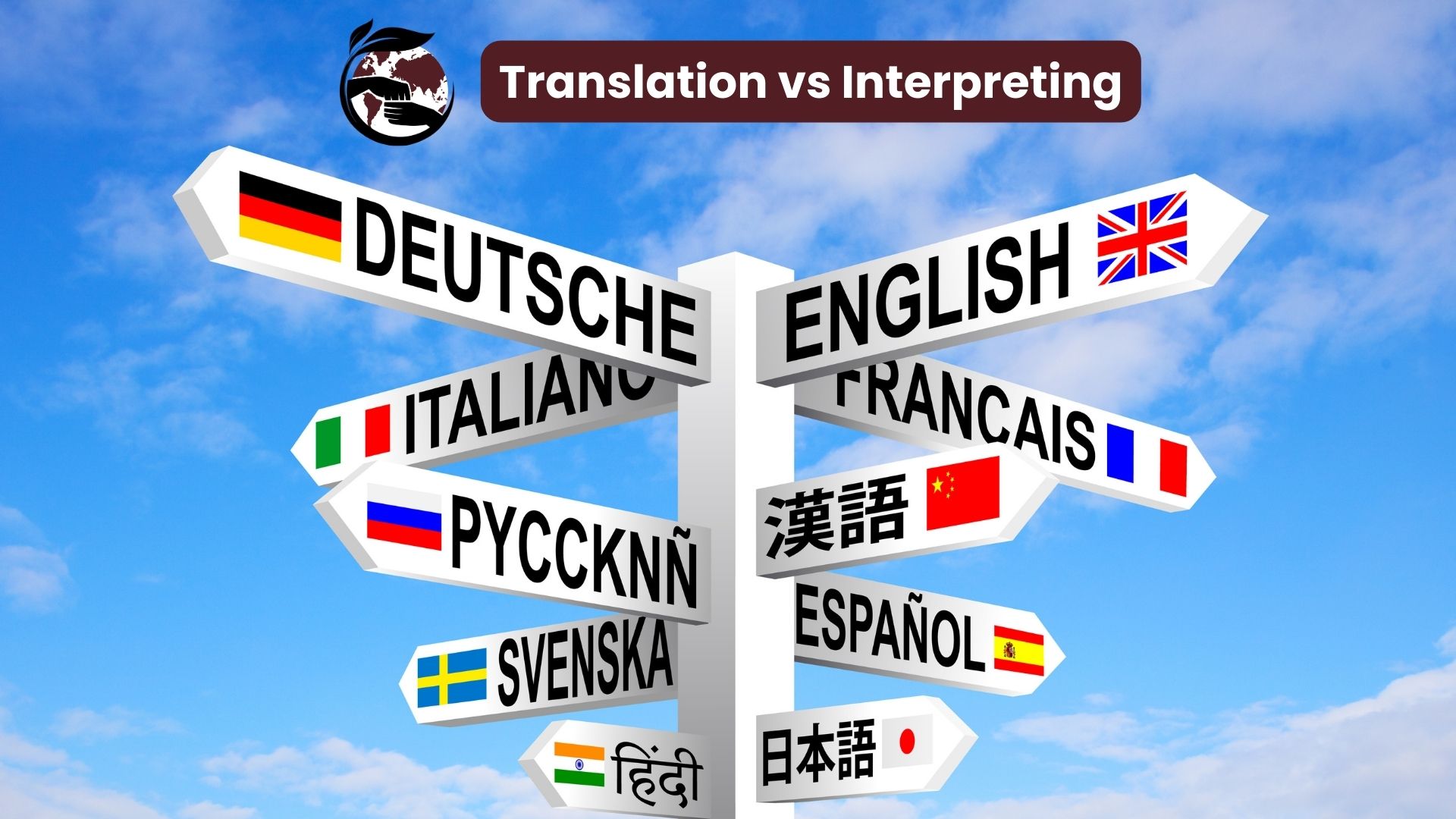In the field of language services, the terms “translating” and “interpreting” are commonly confused. At Inclusive Communication Services, our translators do the writing and our interpreters do the talking. This article clarifies the distinction and processes between translation and interpreting.
Translation: Goals and Process
The main goal of translation is to help people who speak different languages understand each other without the need to learn another language. Translation involves converting written text from one language to another. Translators must find the perfect word in the target language that conveys the same meaning as the word in the source language. This requires having precise knowledge of the source language and a perfect understanding of the target language. Professional translators need to keep themselves up-to-date because language, people, and times are constantly changing.
The translation process is not just about finding words that have the same meaning in both languages. Sometimes words do not have the same meaning in two languages, or they cannot be translated directly. In such cases, translators need to get creative and find a term, synonym, or phrase that conveys the meaning of the word in the source language while considering the target audience. A good translation should read like the original text because, in many ways, translating is a form of rewriting.
Interpreting: Goals and Types
Interpreting is different from translation in that it involves spoken language. The goal of interpreting is the same as translation, which is to help people who speak different languages understand each other. However, interpreters communicate the message verbally from the source language to the target language. There are two main types of interpreting:
Simultaneous interpreting: In this type of interpreting, the interpreter listens to the speaker’s speech in the source language and delivers the message simultaneously in the target language. This type of interpreting requires high levels of focus and attention, so interpreters usually need breaks and cannot work for longer periods.
Consecutive interpreting: In this type of interpreting, the interpreter listens carefully to complete sentences in a speech in the source language, sometimes while taking notes, and uses the speaker’s breaks to deliver the same speech in the target language.
Interpreters need to hear the speaker clearly to understand every word and deliver an accurate message to the target audience. Due to time constraints, interpreters usually do not translate word by word. Instead, they focus on the speaker’s ideas in the source language and try to replicate them in the target language. It is useful to see the speaker so that they can read their body language and lips to fully understand what the speaker is trying to say.
Interpreting and Translation Specializations
Most interpreters and translators specialize in subject areas such as law, medicine, business, banking, technology, science, and literature. When they specialize in these subjects, they become experts in their areas of expertise, which helps them improve their skills.
As language professionals at Inclusive Communication Services, we recognize the nuanced complexities of translation and interpreting. Contact us to enhance your global communication and reach broader audiences effectively.







